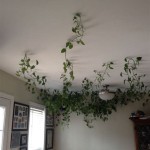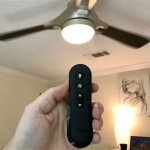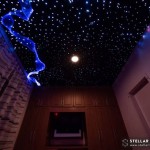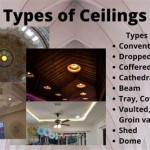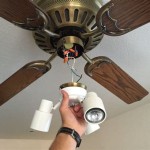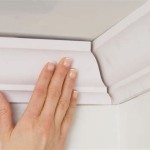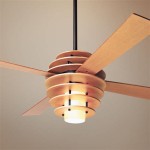Antique Ceiling Fans: A Comprehensive Guide to the Future
Antique ceiling fans, with their intricate designs and timeless appeal, are more than just functional appliances. They are pieces of history, embodying the craftsmanship and aesthetic sensibilities of bygone eras. Beyond their nostalgic charm, antique ceiling fans also offer a unique opportunity to infuse modern spaces with a touch of vintage elegance. This article will delve into the world of antique ceiling fans, exploring their history, identifying key features, and offering insights into their potential for the future.
The History of Antique Ceiling Fans
The origins of ceiling fans can be traced back to ancient Egypt, where hand-operated fans were used to circulate air in homes. However, the first electrically powered ceiling fans emerged in the late 19th century, coinciding with the rise of the Industrial Revolution and the widespread adoption of electricity. These early fans were typically made of wood or metal, with simple, functional designs. As technology advanced, ceiling fans became more sophisticated, incorporating features like adjustable speeds, reversible blades, and decorative elements. During the early to mid-20th century, ceiling fans reached their peak popularity, becoming a staple in homes across the globe.
Antique ceiling fans, representing this era of widespread adoption, are characterized by their distinctive designs and craftsmanship. From the ornate, intricate carvings of Victorian-era fans to the streamlined aesthetics of Art Deco pieces, each era brought its unique artistic influence to ceiling fan design. These early fans often feature robust construction, using materials like cast iron, brass, and wood, which have proven to be remarkably durable over the years.
Identifying Key Features of Antique Ceiling Fans
When exploring antique ceiling fans, it's crucial to understand the key features that contribute to their value and appeal. These features can help you discern authentic antique pieces from later reproductions and can provide valuable insights into the fan's history and origin.
1. Design and Style
Antique ceiling fans exhibit a wide range of design styles, reflecting the prevailing aesthetic trends of their era. For instance, Victorian-era fans often feature intricate carvings, elaborate scrollwork, and decorative elements like stained glass. Art Deco fans, on the other hand, are known for their geometric patterns, sleek lines, and use of materials like chrome and Bakelite. Identifying the specific design style can help you understand the fan's historical context and its potential value.
2. Materials and Construction
The materials used in antique ceiling fans offer crucial clues about their authenticity and age. Cast iron, brass, and wood were common materials in early ceiling fans, and their presence often indicates an older piece. Look for signs of wear and patina, which can add to the charm and value of an antique fan. However, be mindful of repairs or alterations that may have been made over the years.
3. Motor and Electrical Components
The motor and electrical components of an antique ceiling fan can provide valuable information about its functionality and potential for restoration. Check for the presence of a manufacturer's nameplate, which can indicate the fan's age and origin. Additionally, assess the condition of the motor, wiring, and other electrical parts, as these components may require professional attention for safe operation.
4. Condition and Completeness
The overall condition and completeness of an antique ceiling fan play a significant role in its value. Look for signs of damage, wear, or missing parts, as these factors can affect the fan's functionality and desirability. A well-preserved antique fan with all its original components will typically fetch a higher price compared to one that has been significantly altered or restored.
Antique Ceiling Fans in the Future
Antique ceiling fans are not just relics of the past; they have a vibrant future ahead of them. Their timeless appeal, historical significance, and potential for restoration continue to make them a popular choice for homeowners seeking to add a touch of vintage charm to their spaces. As interest in antique and vintage design grows, antique ceiling fans are poised to experience a renewed appreciation.
The future of antique ceiling fans lies in their ability to blend seamlessly with contemporary aesthetics. Their classic designs can be incorporated into modern spaces, enhancing the overall atmosphere and adding a unique touch of character. Moreover, the increasing focus on sustainability and energy efficiency aligns well with the longevity and durability of antique ceiling fans. As people seek to reduce their environmental impact, restoring and repurposing antique fans becomes an attractive option.

Ciata 52 In Indoor Vintage Polished Brass Ceiling Fan With Reversible Walnut Oak Blades 42719l The Home Depot

Tozing 52 In Smart Indoor Black Low Profile Retro Caged Ceiling Fan Light With 4 E26 Lamp Holder No Bulbs Included Cfcfs6965fg5dt 2307 The Home Depot

Tozing 52 In Smart Indoor Black Low Profile Retro Caged Ceiling Fan Light With 4 E26 Lamp Holder No Bulbs Included Cfcfs6965fg5dt 2307 The Home Depot

Progress Lighting Airpro 52 In Indoor Or Outdoor Antique Broe Tropical Ceiling Fan With Palm Leaf Blades P2526 20 The Home Depot

Tozing 52 In Smart Indoor Black Low Profile Retro Caged Ceiling Fan Light With 4 E26 Lamp Holder No Bulbs Included Cfcfs6965fg5dt 2307 The Home Depot

Hunter Low Profile Iv 42 In Indoor Antique Pewter Ceiling Fan For Bedrooms 51060 The Home Depot
Vintage Windsor Browne Brass Ceiling Fan New Old Stock White Stencilled Blades

Ciata 52 In Indoor Vintage Polished Brass Ceiling Fan With Reversible Walnut Oak Blades 42719l The Home Depot

Better Homes Gardens 52 Pearce Black Indoor Ceiling Fan With Light Adjustable Color Temperature 5 Blades Pull Chains Reverse Airflow Com
Related Posts

